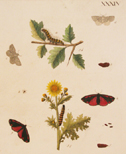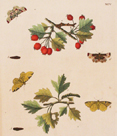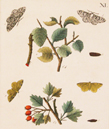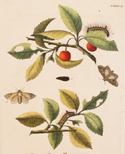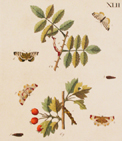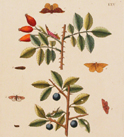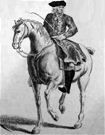
 |
(Click images to enlarge and for purchase information.) Want to know more about prints? |
|||
| Prints are from A Natural History of English Insects (1720, 1749) and are approximately 9" x 11.5" in size (15.5" x 18.25" mat).
Eleazar Albin, a professional watercolor painter who also taught drawing and painting, became attracted to insects, flowers and birds because of their beautiful coloring. He was given early commissions to paint natural history subjects by collector/scientists. One of these was Sir Hans Sloan, then President of the College of physicians (1719-1735) who became a patron and encourager. Following his work for Sloan, Albin met Mary Somerset, Dowager Duchess of Beaufort (1630-1714), she suggested Albin write a book on insects and worked to obtain subscribers among her wealthy acquaintances. The Natural History of English Insects (1714-1721) was illustrated with 100 plates “curiously engraved from life: and (for those who desire it) exactly colored by the artist”. Mark Catesby, Albin’s contemporary and a bachelor, accepted a Royal Society commission offered to Albin two years earlier, to study the natural history of the Carolinas. Albin’s “great family”, at least 10 children, may have kept him in England! Albin’s study of insects and their predators led him to birds.
His three volume, A Natural History of Birds 1731-1738, was the first
English bird book with colored plates. His illustrations were a distinct
improvement on the earlier English illustrated work, Willughby and
Ray’s Ornithology (1676, 1678). By publishing his own book
on birds and doing most of the labor of drawing,
coloring and sometimes etching, he became an example
for many later bird artists.
|
||||


